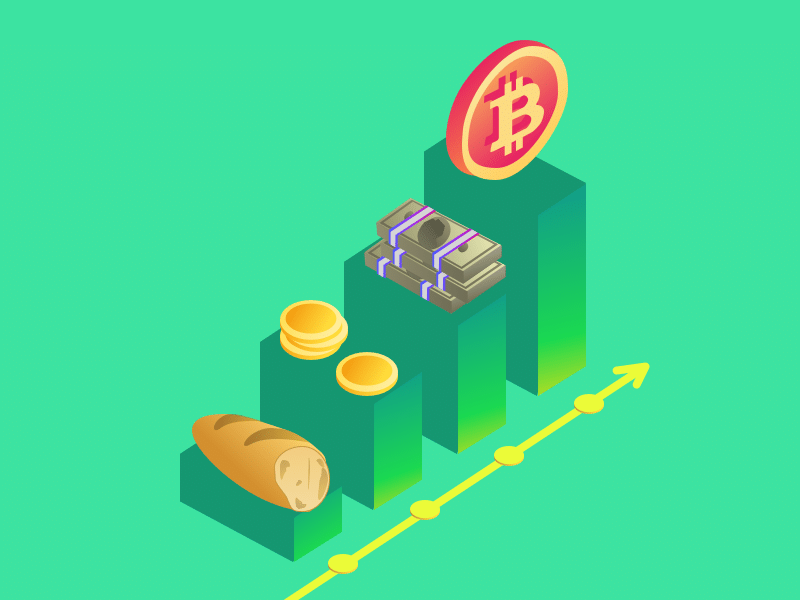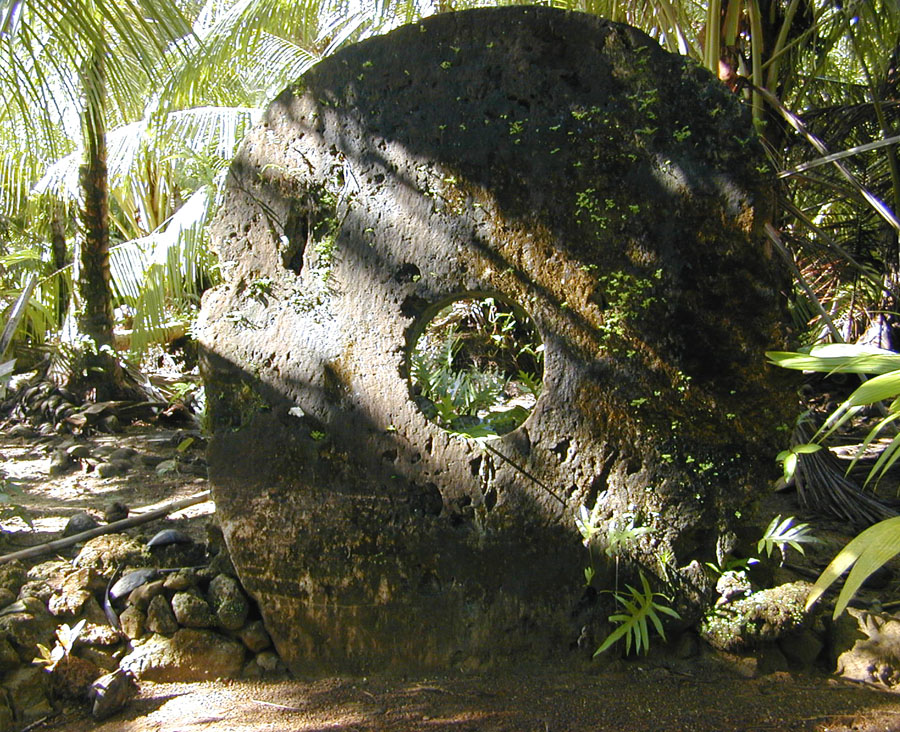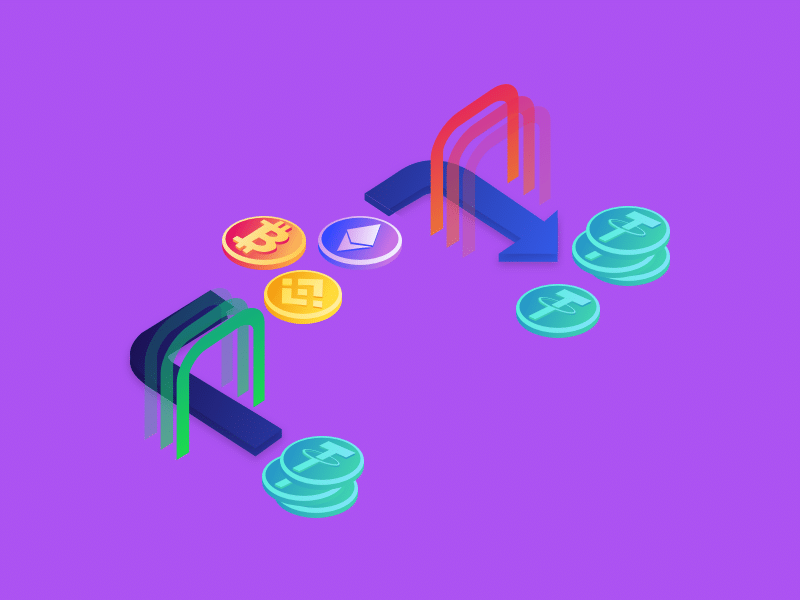Money Evolution, From Barter to Crypto

What is money?
Money is something that we use every day. People want it and trade their time for it. But what is money exactly? In short, money is a tool to store value that you can spend in the future. We store that value across time and space. The longer it can hold the value across time and space the better it is as money. Humans use different items to represent money. Each civilization and era has changed the form of money from seashell into paper and currently cryptocurrency.
The early age of barter
When humans started to advance to the agricultural era, people became more specialized. Each person has their own unique skills and each region has its own valuable commodities. People used barter as a way to meet their needs. But barter has its downside – it’s very hard to know the value of something. For instance, if I am a bread maker and I want to buy a house, how many breads do I need to bake to buy a house? Bread, as a perishable good, also has an expiry date. So as soon as it expires, it is no longer valuable. Thus the barter system can’t store value across time and space, and to transact it, is arduous.
Due to the limitations of barter, humans decided to make a tool that can represent the value of the item, instead of exchanging the item itself. This tool is called money. Good money must have the following functional properties:
- It can store value
- It can be measured (unit of account)
- It can be exchanged (medium of exchange)
To ensure these properties remain intact then money also needs to be scarce, can’t be faked, can easily be verify.
Primitive money
Money changed its forms from time to time. Between 16th to 20th century, the Western Africans used glass beads as money. The Native Americans used seashells as money in the 16th century. To give a more astonishing example, in the 19th century, people in Yap Island used 12ft rocks (called Rai stones) as money. But these commodities have their flaws. They can easily be faked, for example, the colonialists faked and increased the supply of glass beads to disrupted the Western African’s economy. Moreover, money that is valuable in one region, is not necessarily valuable in another region. We need to have money that is uniformly acceptable across time and space.

Rai stones in Yap Island used as currency
The Gold Era: 3rd to 20th Centuries
With the advancement of metallurgy, humans were able to create uniform elements and formed them into different shapes. Since it is also hard to find these elements, people see these items as rare and scarce, thus make them valuable. Not to mention, it takes years and dedication to master the art of metallurgy. People then use these metals as a form of currency. Silver and gold were chosen because they won’t corrode like other metals. Gold is even rarer than silver. Since gold will not corrode for centuries, gold has become the superior money to hold value across time.
Gold then became the money from the 3rd to 20th centuries. Despite its superiority, gold also presents another problem. A gold bar is quite heavy, and moving gold from one place to another takes a lot of effort. One has to hire a guard and need to protect their gold from thieves and robbers. Early banks decided that rather than transporting gold from one place to another, banks can serve as the guardian of these gold bars and then issued gold certificates which then can be redeemed with actual gold. People are elated with this idea because gold certificates are easier to carry than gold bars.
As banks became more popular, so did fractional reserve banking. Fractional reserve banking started in the 17th century. This method allows banks to hold only 10 percent or less of the money that account holders deposit and loan the remaining 90 percent or more to other individuals or companies. Hence, with this practice, banks can create more monetary notes than the gold that back’s them, which happened in the Scali Bank during the late 1400s or Bank of Amsterdam in the 1600s. This remains a practice until today.
Before World War I, most of the world’s currencies were backed by gold or silver. For example, the Pound Sterling is backed by silver, while the Dutch Guilder is backed by gold. However later during World War I, many governments started to print money without the gold backing to finance the war.

Standardized 1kg Gold Bar, produced by Argor-Heraeus
The emergence of fiat money
During World War II, 44 countries met in Bretton Woods in 1944. Through this meeting, they decided that the US Dollar became the world currency for trade and central banks would trade through it and settle their account in it, removing the need for physical movement of the gold. Countries would peg their currency to US Dollar, while the USD itself is pegged/backed by gold. The US dollar effectively became the global currency. The United States held the world’s largest supply of gold.
As the U.S. economy prospered, Americans bought more imported goods and paid in dollars. This large balance of payments deficit worried foreign governments that the United States would no longer back up the dollar in gold, causing countries requesting to convert their USD to Gold. By the 1970s, the US supply of gold was declining. In 1971, under President Nixon, the US decided that they no longer wanted their currency to be backed by gold. This ended the relationship between gold and the US Dollar, which also ended the relationship between gold and all of the world’s currencies. The world’s monetary system finally transitioned from Gold Standard to Fiat Money.
Fiat comes from the Latin word “fiat” which means “by decree or order”. Fiat money is money that is backed by the trust in the government. So in short, fiat money is currency printed by a central authority and declared a legal tender based on the trust of the government.
Fiat money is not backed by gold and the supply is controlled by Central Banks. In times of need/crisis, the government can increase the supply of money through money printing and provide stimulus to help improve its own economy. However, money printing will debase/devalue the currency in the long run. Therefore, depending on the amount of money printing done by the country you live in, the value that you store at the moment in fiat money might be worthless in the future.

Fiat Money today
Internet era: the birth of new money
When the internet appears and was acceptable in mass, things changed drastically. While many transactions are still done in cash (coins or papers), payment for goods and services grows more and more digital. We use banks, credit cards, e-wallets, and other payment technologies to transact value, and our money lives digitally as numbers stored as account balances in banks. However, all banks work in silos because each of them maintains separate databases. Settlements between banks can take days and even weeks. Even though fiat money is still winning the speed and transportability, it still relies on central authorities to update the ledger, issue the currency, and ensure the system is running. Thus, transactions have become more and more costly and more complicated.
Bitcoin and the new era of cryptocurrency
Enter Bitcoin. Created in 2008, Bitcoin is digital money that aims to provide an alternative monetary system/network where users do not have to rely on centralized parties for transactions. Bitcoin is saleable across space and time. Using blockchain technology, people can transact Bitcoin peer-to-peer without relying on banks / existing financial systems. And using cryptography, bitcoin ensures the privacy and security of the money. Bitcoin then becomes decentralized and trustless money governed by a computer algorithm. With blockchain, bitcoin also solved the double-spending problem in digital money.
Unlike fiat money where the supply increases over time, the supply bitcoin supply is fixed at 21 million BTC. Since it is stored on the internet, the transaction settlement can be finalized within minutes. Since the supply of Bitcoin is fixed, as more and more people use and demand Bitcoin, the price of Bitcoin rises exponentially due to both scarcity and network effect. The fixed supply also makes bitcoin storing value better than gold, thus not only it can serve as money but also as a commodity. Bitcoin then can store value better than gold and fiat money across space and time.
Apart from bitcoin, there are other types of cryptocurrencies that right now are being used. Each cryptocurrency is different, and they try to address different problems in our current monetary system. We will cover more of the differences of each cryptocurrency in the next chapters

Bitcoin and other cryptocurrencies
Share


